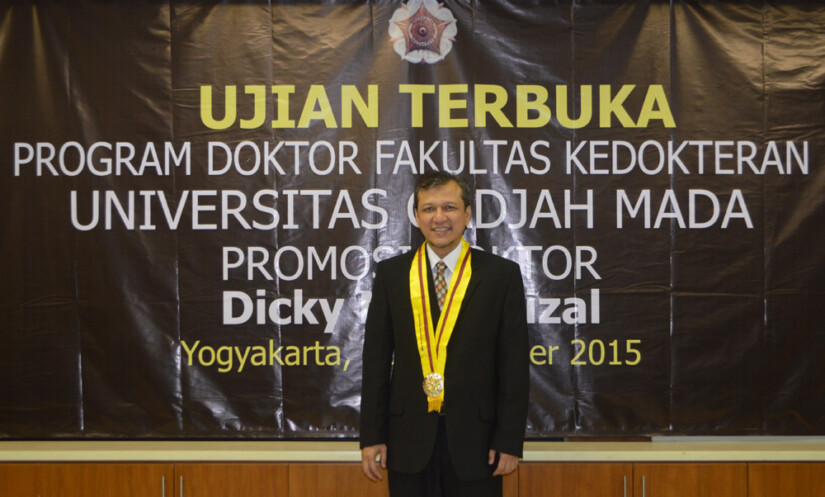
Prevalence of reproductive health problems are increasing from year to year. These include the decrease of testosterone hormone poduction in men that causes infertility, sexual problems, metabolic disorder, osteoporosis, or premature aging.
Andrologist dr. Dicky Moch Rizal, Sp. And., AIFM., FIAS., lecturer in Faculty of Medicine of Universitas Gadjah Mada, said the testosterone level that is very low or hypogonadism related to hyperglycemia corresponds to Advanced Glyation End Products (AGE) as one pathophysiology in the ocurrence of diabetes mellitus. Exposure of AGE may cause the increase in receptor AGE expression (RAGE) that will later form the AGE-RAGE ties.
These AGE-RAGE later activate the signals for the formation of Nfkβ whose effects include the increase in cyclooxigenase enzyme expression 2 (COX-2), which may trigger the process of inflammation that ends up in the cell function disorders.
“If affecting the Ledydig cells, this will cause the decrease in testosterone production,” he said on Saturday (21/11) during his open doctoral examination at Faculty of Medicine UGM.
Defending his dissertation titled Study on Expression of Receptor Advanced Glycation End Products (RAGE), Enzyme Cyclooxigenase Expression – 2 (COX-2) and Testosterone Level, Dicky said that one of the components in mangosteen peels extract, namely gamma mangostin. is known to have the anti-inflammatory effects. Evidence is therefore required for the role of gamma mangostin in inhibiting the decrease in testosterones through the inhibition of expression of RAGE and COX-2. Also, the exposure of AGE in increasng the expression of RAGE, and COX-2 and the decrease in the function of Leydig cells that produce testosterones.
Of the research in Leydig cell cultures in male Spargue Dawley mice, it is known that the RAGE expression is free in the cell cultures group of Leydig that is not AGE inducted is higher than those that are AGE inducted. Meanwhile, testosterone level in cell culture of Leydig not AGE inducted does not show differences from those that are AGE inducted.
Meanwhile, COX-2 expression in Leydig cell culture which is not AGE inducted does not show any difference from those that are AGE inducted. Furthermore, RAGE, (COX-2) expressions and testosterone level in Leydig cell culture that is just AGE inducted are not different from the group that is AGE inducted and gamma mangostin incubated. So is the COX-2 expression in Leydig cell culture group that is AGE inducted only does not show any difference from those that are AGE inducted and gamma mangostin incubated.


